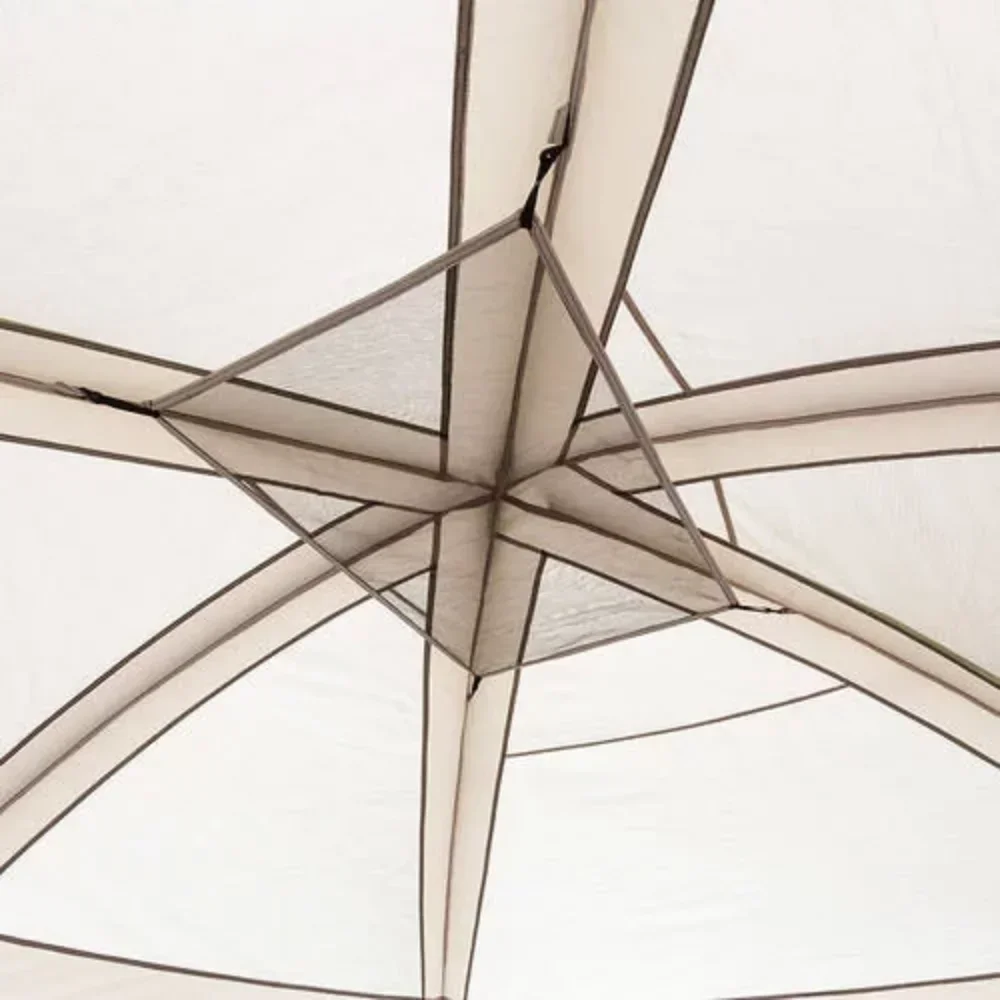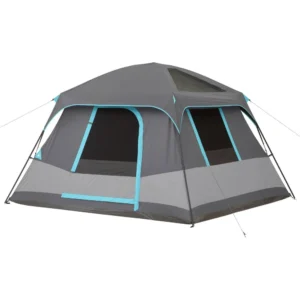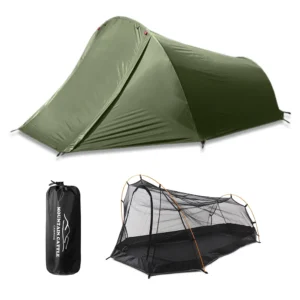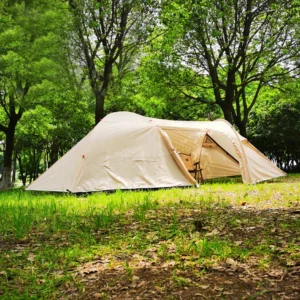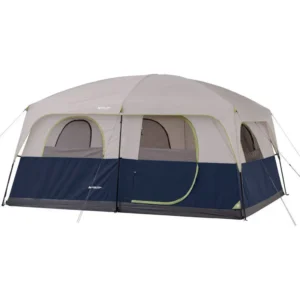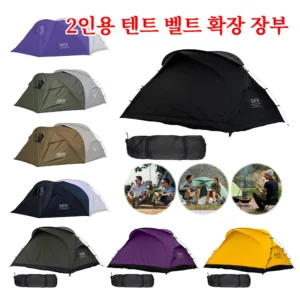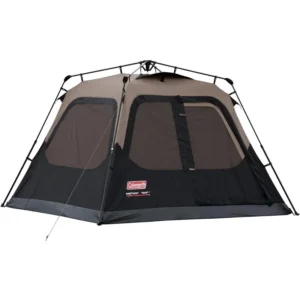Understanding Family Tent Zoning for Comfort and Organization
Family camping trips create lasting memories, but they can quickly turn chaotic without proper organization. This is where tent zoning comes in – the strategic creation of functional areas within your camping space that helps maintain order and harmony during your outdoor adventures.
Tent zoning for large families isn’t just about squeezing everyone into a confined space; it’s about thoughtfully designing your camping accommodations to ensure everyone has the space they need. For families with five or more members, standard camping setups often fall short, leading to frustration and discomfort that can dampen the entire experience.
The benefits of strategic tent zoning include:
- Enhanced privacy for all family members
- Better organization of gear and personal belongings
- Reduced conflicts over shared spaces
- Improved sleep quality through noise management
- Greater overall camping satisfaction
When properly implemented, tent zoning transforms your camping experience from merely surviving outdoors to truly thriving together. Understanding various shelter options for two campers provides insights that can be scaled up for larger groups, applying the same principles of efficient space utilization.
Essential Elements of Large Family Tent Selection
Selecting the right tent is the foundation of successful family camping. Start by applying the “Plus Two Rule” when considering tent capacity – a 6-person family should look at 8-person tents at minimum. This ensures adequate space for both people and their gear.
Key features that enable effective tent zoning include:
- Room dividers/internal walls: Fabric or solid dividers that create separate rooms within your tent
- Multiple doors and entrances: Allow family members to enter and exit without disturbing others (aim for at least 2-3 doors in large family tents)
- Standing height throughout: Look for tents with 6-7 feet (180-210 cm) of headroom across most of the floor plan
- Vestibules and extended awnings: Create additional protected spaces outside the main sleeping area
- Storage solutions: Built-in pockets, gear lofts, and hanging organizers help keep items off the floor
Weather considerations become even more critical with large family setups. Look for tents with robust waterproofing (at least 2000mm hydrostatic head rating), quality seam sealing, and sturdy pole construction that can withstand wind. A tent vestibule provides essential transitional space between the outdoors and your tent interior, serving as a buffer zone for wet gear, shoes, and outdoor equipment.
Comparing Family Tent Styles for Optimal Space Management
Different tent styles offer varying advantages for large family camping. Your choice will significantly impact how effectively you can implement zoning strategies.
| Tent Style | Typical Capacity | Setup Time | Zoning Flexibility | Best For |
|---|---|---|---|---|
| Cabin Tent | 6-12 people | 15-25 min | Excellent | Maximum interior space, defined rooms |
| Tunnel Tent | 5-8 people | 10-20 min | Very Good | Excellent living-to-bedroom ratio |
| Multi-room Dome | 5-9 people | 15-20 min | Good | Better stability in wind, clear space division |
| Inflatable Tent | 4-10 people | 5-10 min | Good | Quick setup despite large size |
Cabin Tents: With near-vertical walls, these maximize usable interior space. Their boxy shape works well with furniture and creates natural room divisions. However, they generally perform worse in high winds compared to other styles.
Tunnel Tents: These offer excellent living-to-bedroom ratio with their elongated design. The layout naturally creates sequential rooms, though the middle sections may have less headroom.
Multi-room Dome Tents: These hybrid designs combine dome stability with room dividers. They handle adverse weather better than cabin tents but with some sacrifice to interior space efficiency.
Inflatable Tents: Using air beams instead of poles, these innovative designs offer remarkably quick setup times even for large models. They’re ideal for families who move campsites frequently.
Exploring various two room camping tent options can help you understand how different manufacturers approach the challenge of creating distinct zones within a single structure.
Single-Tent Zoning: Creating Rooms Within Rooms
When using a single large tent for your family, strategic internal organization becomes crucial. Most larger family tents come with built-in room dividers, but you can enhance their effectiveness with these strategies:
- Use sleeping bags and pads that match the dimensions of your designated sleeping areas
- Position sleeping areas at opposite ends of the tent when possible
- Create a parents’ sanctuary with the most distance from children’s areas
- Group young children together while giving teens their own space when possible
- Use height for storage with hanging organizers and gear lofts to maximize floor space
For a family of five, consider a tent with two divided sections – parents in one area, children in the other. For six or more family members, look for tents with multiple room dividers that can create three distinct areas: parents, older children, and younger children.
Sound management between zones is crucial for sleep quality. Soft items like sleeping bags and clothing can help absorb sound when positioned strategically. Additionally, using white noise apps on a small device can help mask disruptive sounds and create more privacy between zones.
The key advantages of two-room family tents become particularly evident when camping with children of different ages who have varying sleep schedules and privacy needs.
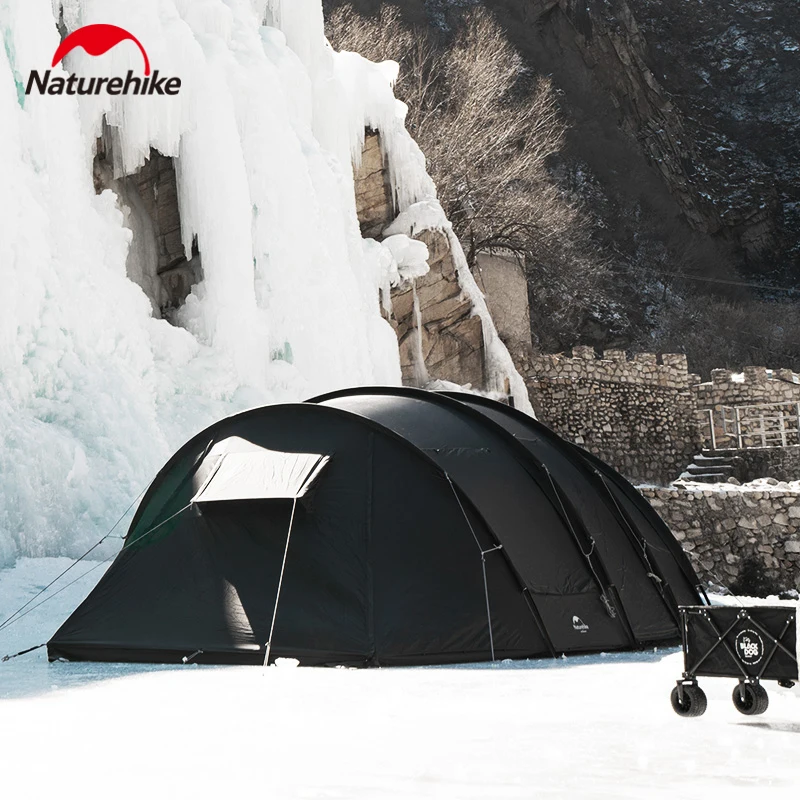
Multi-Zone Living Areas: Beyond Just Sleeping Space
A well-designed family tent setup extends beyond just sleeping arrangements. Creating functional living areas transforms your tent from merely a place to sleep into a true home away from home.
Central Living Room Zone
Designate the tallest center section of cabin or tunnel tents as your family gathering space. Include lightweight camping furniture like collapsible tables and chairs. A small LED lantern hanging from the center creates ambient lighting for evening activities.
Changing Area
Privacy is essential during clothing changes. Set aside a small corner with a suspended sheet or use the back of a room divider. A small mat on the ground keeps feet clean and dry during changes.
Indoor Play Space
For rainy days, designate a specific zone for quiet children’s activities. Pack compact games, coloring books, and activities that don’t require large movements. A dedicated play area contains mess and keeps sleeping areas clean.
Entrance/Mudroom Zone
Create a transition area near the main door using the tent vestibule or just inside the entrance. Include a small mat for removing shoes and hooks for wet jackets. This buffer zone prevents dirt and moisture from spreading throughout your living space.
Many tall stand up camping tent options provide the vertical space needed to create these functional zones while allowing adults to move comfortably without constant stooping.
Multi-Tent Configurations: The Family Compound Approach
Sometimes the best solution for large families isn’t one massive tent but rather multiple smaller tents strategically arranged. This “family compound” approach offers several advantages:
- Greater flexibility in campsite selection (finding space for several small tents vs. one huge tent)
- Better separation of early risers from night owls
- More privacy for different family units or age groups
- Easier transportation and setup (dividing tent components among multiple people)
Popular tent placement patterns include:
- Circular arrangement: Tents positioned in a circle with doors facing a central common area
- Linear setup: Tents in a row with a communal area at one end, ideal for narrow campsites
- Clustered configuration: Groups of tents organized by family unit or function
When creating a multi-tent setup, consider dedicating specific tents to different functions:
* Sleeping tents (potentially divided by age groups or family units)
* Common area/gathering tent (often with removable sidewalls for air flow)
* Kitchen/dining tent (positioned away from sleeping areas to minimize food odors and noise)
* Storage/gear tent (centralizing equipment to free up space in sleeping areas)
The distance between tents matters – close enough for convenience but with sufficient separation for privacy. Generally, 5-10 feet (1.5-3 meters) between tents strikes the right balance.
Dome camping tent options work particularly well in these configurations due to their stability and efficient use of ground space.
Creating the Perfect Communal Hub in Your Campsite
The heart of any successful family camping setup is the communal area – a sheltered, comfortable space where everyone can gather for meals, games, and conversation. This central hub ties your tent zones together and provides a focal point for daily activities.
Start by identifying a flat area centrally located among your tents. Size matters – aim for approximately 100-150 square feet (9-14 square meters) for a family of 5-6, allowing everyone to gather comfortably. Use a large tarp, canopy (10×10 feet/3×3 meters minimum), or specialized shelter to create protection from sun and light rain.
For your outdoor kitchen zone, position cooking equipment on one side of the communal area, ideally downwind from sleeping tents. A folding table at standing height (around 30-34 inches/75-85 cm) makes meal preparation more comfortable. Store cooking supplies in weatherproof containers nearby for easy access.
The social space should include comfortable seating arranged in a circle or U-shape to facilitate conversation. If campfires are permitted, make this your focal point, keeping it at a safe distance (at least 15 feet/4.5 meters) from all tents and overhanging branches.
Weather-proofing this communal area extends your outdoor living space regardless of conditions. Consider adding removable sidewalls to your canopy and ensure proper drainage by positioning on slightly elevated ground.
The principles of mastering two-person lightweight tent setup can be applied to integrating smaller tents within your larger family configuration, creating flexible sleeping arrangements for older teens or guests.
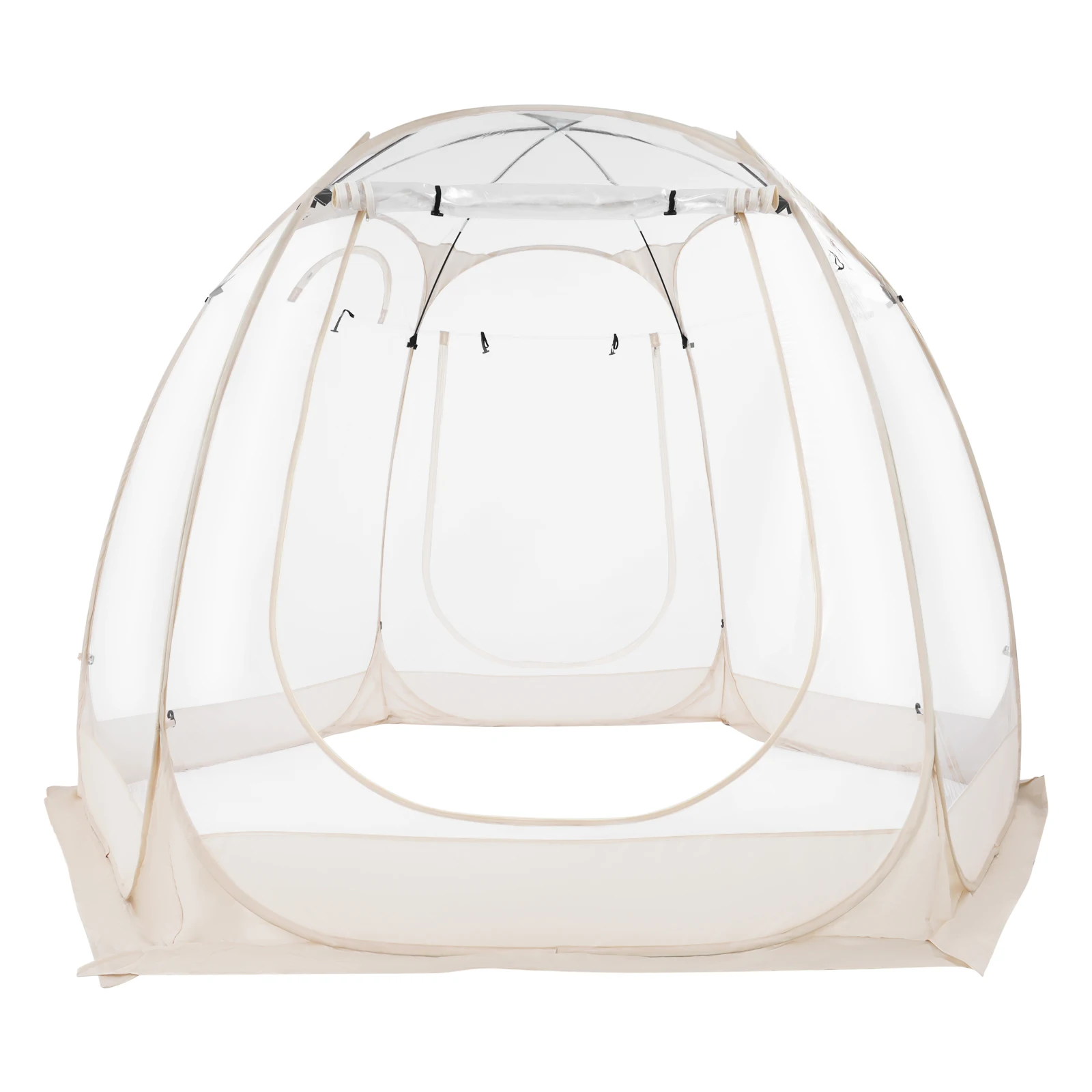
Specialized Zones for Extended Family Camping
When multiple generations or family units camp together, thoughtful zoning becomes even more crucial for harmonious coexistence.
Multi-Generation Considerations
For grandparents or older family members, prioritize comfort and accessibility. Position their tent on flat ground with minimal obstacles between their tent and common areas. Consider providing comfortable seating with back support in communal spaces.
Managing Different Sleep Schedules
Create buffer zones between early risers and night owls by positioning their tents at opposite ends of your campsite. Designate quiet hours for areas near sleeping tents and create a “late-night zone” away from sleeping areas for evening conversations.
Privacy vs. Togetherness Balance
Successful extended family camping balances together time with privacy. Schedule daily group activities but also build in “family unit time” where each household can enjoy activities independently. Having easy setup camping tent options allows for quick configuration changes as needs evolve during your trip.
Practical Gear Organization Systems Within Your Zones
Effective gear organization transforms the camping experience for large families, eliminating the frustration of missing items and cluttered spaces.
- Create a central “gear library” in your communal tent or under a sheltered area with clear containers labeled by category (cooking, first aid, activities)
- Assign personal storage bins for each family member, color-coded or labeled
- Use hanging shoe organizers repurposed for small items like flashlights, sunscreen, and snacks
- Implement a “return after use” policy for tools and shared equipment
- Designate a specific area for wet gear with a drainage solution
Drying lines between trees or portable clothing racks help manage wet clothing without bringing moisture into sleeping areas. A small whisk broom and dustpan in each tent zone makes regular cleanup quick and easy, maintaining organization throughout your trip.
Various design options for dual room tents incorporate innovative storage solutions that can be adapted for your specific organizational needs.
Can you use a camping screen house as part of your zoning strategy?
Absolutely! A screen house makes an excellent addition to any family camping zoning plan. These structures typically measure 10×10 to 12×12 feet (3×3 to 3.6×3.6 meters) and provide versatile, bug-free space that bridges the gap between fully enclosed tents and open-air camping.
Benefits include:
* Protection from insects while maintaining airflow and outdoor views
* Shelter from light rain and UV exposure
* Perfect space for meal preparation and dining without bugs
* Alternative sleeping area in hot weather (with added privacy screens)
Screen houses work especially well as the central hub in a multi-tent configuration. Position your screen house in the middle of your tent arrangement to create a communal gathering spot protected from insects during peak mosquito hours.
Tall / Stand Up Camping Tent, Two Room Camping Tent
$407.93 Select options This product has multiple variants. The options may be chosen on the product pageCompact Backpacking Tent, Lightweight Backpacking Tent, Waterproof Camping Tent
$335.52 Select options This product has multiple variants. The options may be chosen on the product pageCamping Tent with Vestibule, Waterproof Camping Tent
Price range: $407.89 through $479.48 Select options This product has multiple variants. The options may be chosen on the product page- $476.52 Select options This product has multiple variants. The options may be chosen on the product page
Backpacking Tent with Vestibule, Trekking Pole Backpacking Tent, Waterproof Camping Tent
Price range: $271.99 through $519.52 Select options This product has multiple variants. The options may be chosen on the product pageEasy Setup Camping Tent, Instant Camping Tent
Instant Cabin Tent Double Layer Canvas 1-Minute Setup Spacious Family Camping Shelter with Air Vents$308.10 Select options This product has multiple variants. The options may be chosen on the product page
What are the best ways to create privacy in shared tent spaces?
Privacy creation within shared tent spaces goes beyond basic room dividers. These practical solutions help each family member maintain personal space:
- Hanging fabric room dividers from tent ceiling with removable hooks
- Positioning backpacks or duffel bags as temporary walls between sleeping areas
- Using pop-up privacy shelters inside larger tents for changing
- Creating visual barriers with strategically arranged sleeping pads and air mattresses
- Employing folding camp furniture as room separators
Experienced family campers often use lightweight fabric panels with tension rods that can be quickly installed between tent sections. These provide better sound insulation than standard tent dividers while still being packable.
Just as important as physical dividers are the ground rules for shared spaces:
* Establish tent entry and exit protocols, especially for early risers
* Create a schedule for private use of changing areas
* Implement quiet hours for different zones
* Use headphones for personal entertainment
* Respect closed dividers as “do not disturb” signals
How do different weather conditions affect tent zoning decisions?
Weather conditions significantly impact how you should arrange your tent zoning strategy for maximum comfort and safety.
| Weather Condition | Recommended Zoning Adjustments |
|---|---|
| Heavy Rain | Position tents on slight inclines, create covered walkways between zones, designate a dedicated dry area for gear |
| High Winds | Use dome tents rather than cabin styles, position larger tents as windbreaks for smaller ones, lower communal canopies |
| Extreme Heat | Maximize shade for all tents, create additional ventilation in sleeping areas, position tents to capture prevailing breezes |
| Cold Weather | Cluster tents closer together, create a windbreak with tarps, position communal area central to all sleeping zones |
Seasonal considerations also matter. Summer setups might prioritize shade and ventilation with more spread-out configurations, while spring and fall camping might benefit from more clustered arrangements that conserve warmth.
Always have an emergency reconfiguration plan. Know how to quickly consolidate your setup if weather deteriorates rapidly. The adaptability of multi-season tents for variable climates becomes particularly valuable when conditions change unexpectedly.
Is tent zoning different for backcountry camping versus campground stays?
Absolutely. While the basic principles remain the same, backcountry tent zoning requires significant adaptation:
Backcountry Constraints:
* Limited flat ground availability often dictates tent placement
* Weight restrictions mean fewer comfort items and simpler divider systems
* Leave No Trace principles require minimal site alteration
* Wildlife considerations affect kitchen placement (at least 100 feet/30 meters from sleeping areas)
Campground Advantages:
* Designated sites with established flat areas
* Vehicle access allows for heavier, more elaborate zoning equipment
* Proximity to facilities influences tent placement
* Fixed fire rings or grills determine communal area positioning
In backcountry settings, focus on the essentials: sleeping zones separated from cooking/food storage with careful attention to local regulations. For either environment, waterproof camping tent options provide crucial protection against unpredictable elements, especially important when camping with children.
Mastering Tent Zoning for Ultimate Family Camping Comfort
Effective tent zoning transforms family camping from a potentially chaotic experience to an organized, enjoyable adventure that accommodates everyone’s needs. By thoughtfully arranging your space – whether within a single large tent or across multiple shelters – you create a functional outdoor home that enhances the camping experience for all family members.
Remember that perfecting your family’s ideal configuration takes time. Consider practicing setups in your backyard before major trips, allowing you to refine your approach without the pressure of arriving at a campsite late in the day. Take notes after each camping experience about what worked well and what could be improved.
The effort invested in mastering tent zoning pays dividends in camping harmony. When everyone has appropriate space, privacy, and organization, you can focus on what really matters – creating lasting family memories in the great outdoors.

